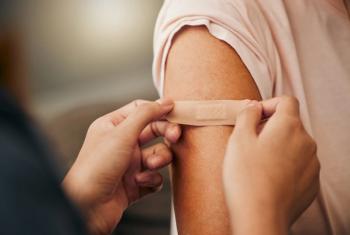
Your Voice
READERS' FORUM
Corrections
An atypical MCV for TEC
In "
Wm. B. Brandenberger, MD
Gretna, Va.
The author replies: We appreciate this perceptive observation about this mildly macrocytic MCV. We could have located a more typical case than this one, but this example does make the clear point that most individual cases of disease are not entirely classical. In this patient, the overall clinical presentation so strongly resembled that of TEC that the experienced hematologists who wrote and reviewed this manuscript immediately leaped to this diagnosis, for which the test of time is the only proof. However, a careful, stepwise thought process should be encouraged.
An MCV of 87 could occur with B12 or folate deficiency. However, clinically significant deficiency of B12 or folate is extremely unusual in children (Pappo AS et al: Pediatrics 1992;89[6Pt1]:1063). In more than 13 years, I have seen it in only one child, who had an extraordinarily abnormal diet (solely mashed potatoes for months). For severe B12 or folate deficiency anemia (Hgb 4.8 g/dL in this case), it is expected that leukopenia and thrombocytopenia would develop as well. In contrast, thrombocytosis (and normal white count) shown by this patient's CBC early on is highly consistent with TEC (also potentially with Diamond-Blackfan anemia), and not B12 or folate deficiency.
Iron deficiency can also be associated with severe anemia and thrombocytosis, but nearly inevitably also with profound microcytosis. The lack of red cell macro-ovalocytes or hypersegmented neutrophils on peripheral blood smear also is very inconsistent with B12 or folate deficiency. It is very unlikely that abrupt improvement would occur without specific supplementation in a deficiency case, although admittedly the pace of spontaneous recovery in this case was obscured by transfusion. The initial reticulocytopenia is highly atypical for hemolytic anemia. Spontaneous recovery is inconsistent with Diamond-Blackfan anemia or other hereditary anemia, and this patient's age (and normal stature) at presentation is atypical of Diamond-Blackfan anemia. There is so little in this patient's case consistent with the usual macrocytic anemia suspects that normocytic anemia differential diagnosis items need to be considered. Although a stepwise, systematic algorithm based on red blood cell size should be encouraged in the clinical evaluation of anemia, it must be combined with pattern recognition, particularly in cases that wind up having some atypical features.
Gregory J. Kato, MD
Homeopathy and otitis media
As a physician concerned about the overuse of antibiotics and the growing numbers of resistant microorganisms, I am always interested in studies that address alternative therapies for common infectious diseases. In "
The results of the study showed no statistically significant differences between homeopathic therapy vs. placebo in terms of treatment failure during the treatment phase or after up to six weeks. There was a statistically significant difference in symptom score at 24 and 64 hours in the homeopathic therapy group, but no statistically significant differences at other times. The study also reports fewer middle ear effusions at two weeks in the treatment group, but fewer in the control group at six weeks.
However, the study was not designed to determine efficacy of therapy, and the authors correctly state in their discussion that "It is impossible to draw conclusions from a preliminary study such as this, because it was not intended to be large enough for adequate statistical power." Sample size calculations indicate that a sample size of 243 children in each of two treatment groups would be necessary to show a significant difference in treatment failure rates at five days (the end of their evaluation period for treatment failure).
Therefore, although the Contemporary Pediatrics article states otherwise, this study does not "offer scientific support" for parents who wish to consider homeopathic therapies for the early management of acute otitis media.
Michael J. Verive, MD
Green Bay, Wis.
The author replies: Dr. Verive is technically correct. However, the preliminary data, while not definitive, do, I maintain, support the decision of parents who choose homeopathy. An absence of definitive data does not mean no data or lack of support; it simply means there is still a lot of uncertainty.
Kathi J. Kemper, MD, MPH
Readers' Forum. Contemporary Pediatrics 2002;7:109.
Newsletter
Access practical, evidence-based guidance to support better care for our youngest patients. Join our email list for the latest clinical updates.










